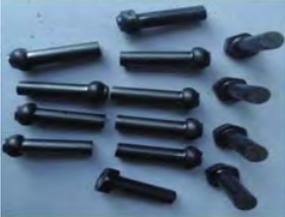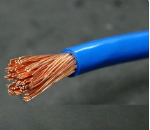TC16 titanium alloy, an independently developed high-performance titanium alloy in China at the beginning of the 21st century, has garnered significant attention due to its excellent process plasticity, high strength, good hardenability, and outstanding cold heading formability, building upon the foundation of the Russian-made BT16 titanium alloy. With a nominal composition of Ti-3Al-5Mo-4.5V, this alloy belongs to the α+β two-phase titanium alloy category, featuring a phase transition point ranging from 840 to 880°C and a β-stabilizing coefficient of 0.83. TC16 titanium alloy boasts impressive fatigue resistance, weldability, and low sensitivity to stress concentration, making it a promising candidate for aerospace and other industries.

In China's self-developed C919 medium-sized aircraft, fasteners account for 5% to 6% of the total aircraft mass, with a staggering number of 2 to 3 million pieces. The utilization of these fasteners underscores the potential of TC16 titanium alloy in high-performance fastener applications.
Strengthening of TC16 titanium alloy is typically achieved through cold heading and heat treatment, requiring good plasticity in the annealed state and high strength in the solution-aged state. Compared to the Russian BT16 titanium alloy, domestically produced TC16 exhibits comparable mechanical properties and process plasticity, but China's cold heading technology is still immature, hindering mass production. Research indicates that a material's cold heading deformability is linked to its plasticity, shear strength, and microstructure.
To gain a deeper understanding of TC16 titanium alloy's properties, this study explores the effects of various annealing and solution-aging processes on the microstructure and properties of TC16 alloy bars. The experimental material, provided by Baoji Titanium Industry Co., Ltd., was a TC16 alloy ingot refined through multiple vacuum consumable arc meltings, followed by free forging + precision forging, rough rolling + continuous rolling, ultimately forming an ϕ8.0 mm wire coil with an α+β/β phase transformation temperature of 856°C. The initial microstructure comprises fine equiaxed primary α-phase grains and a martensitic α′′+β matrix, with completely fragmented original β grain boundaries. The primary α-phase accounts for approximately 50% of the volume, appearing as short rods, needles, and particles.
As the annealing temperature increases, the content of primary α-phase gradually decreases, accompanied by grain growth. Concurrently, the tensile strength, yield strength, and shear strength of the bars decrease, while the elongation increases, and the reduction of area first rises and then falls. Notably, the reduction of area reaches its peak of 74% at 780°C annealing.
Elevating the quenching heating temperature in the α+β phase region of TC16 titanium alloy bars reduces the content of primary α-phase and increases β-phase, with the metastable β-phase transforming into α′′ phase after quenching. With higher solution temperatures, the tensile strength, yield strength, and shear strength of the solution-aged bars increase, while the elongation decreases, and the reduction of area exhibits a similar trend of initial increase followed by a decrease. At 800°C, the bars achieve a maximum reduction of area of 74% and a tensile strength of 1098 MPa.
As the aging temperature rises, the dispersion of precipitates formed by the transformation of metastable β-phase retained during the solution process varies. The tensile strength, yield strength, and shear strength of the bars gradually decrease, while the elongation increases, and the reduction of area first increases and then decreases.
In summary, by optimizing annealing and solution-aging processes, TC16 titanium alloy bars can achieve an optimal balance between strength and plasticity. Specifically, annealing at 800°C followed by aging at 560°C for 8 hours enables the bars to reach a tensile strength of 1100 MPa and a reduction of area of 74%, striking the best compromise between strength and plasticity.
This research underscores that fine-tuning the annealing and solution-aging processes of TC16 titanium alloy bars can fully harness their mechanical properties, meeting the stringent requirements of high-performance fasteners in aerospace and other fields. It also showcases China's significant progress in the research, development, and application of high-performance titanium alloy materials, providing vital insights for enhancing their performance and reducing production costs.
Importantly, the localization and mass production of TC16 titanium alloy are crucial for enhancing China's self-sufficiency in aerospace and driving the transformation and upgrading of the domestic titanium alloy materials industry towards green, low-carbon, and high-quality development goals.





 Customer service 1
Customer service 1  Customer service 2
Customer service 2